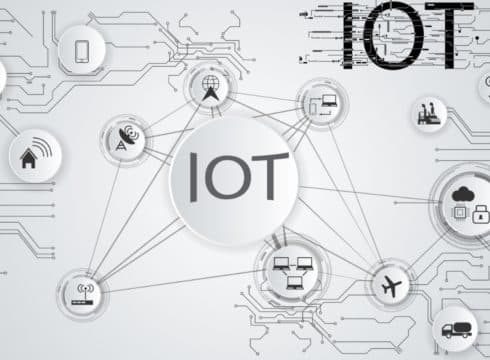IoT market globally stands at $212.1 Bn currently and might scale up to $1319.08 Bn by 2026
IoT will overhaul servers, storage, security and even analytics
IoT enabled edge computing will also reduce bandwidth costs
Inc42 Daily Brief
Stay Ahead With Daily News & Analysis on India’s Tech & Startup Economy
In today’s world of modern-day businesses, formed on the backbone of computers and the internet, the Internet of Things (IoT) has had a massive impact on data centres. Why? Because with massive amounts of data generated every day, the data centres had to evolve pretty quickly to become more agile, manage power better and be energy efficient.
The engineers across the world had to remodel their data centres to process, analyse and fit it the massive structured and unstructured data sets. And IoT was one of the many new-age technologies which came to the rescue. Not only, IoT helped in changing the architecture of the traditional data centre to accommodate data, but also offered choice to sit on the public cloud, in-house data centre or even at the edge. Too many choices for which new infrastructure needs to be built.
Going by the facts, the Internet of Things market globally stands at $190.0 Bn in 2018 and might scale up to $ 1111.3 Bn by 2026, according to a report by Fortune Business Insights. That’s a whopping 25% increase in market size in under 10 years. Another report by Fortune points out the major players in the industry. The ones that make the list are Google, Amazon, Apple, Microsoft, Dell, Samsung, Intel and many other players in the market.
So, what are the features Internet of Things can add to the future data centres? Here are a few.
Rethink Current IT Infrastructure
Internet of Things will overhaul servers, storage, security and even analytics. But, whereas on the one hand, it is making engineers re-think the current IT infrastructure, it also has many use cases. IoT has a two-fold use case – sensors and edge computing for such environment. For instance, sensors for temperature and access control can help data centres. Or IoT enabled edge computing can help in video analytics. This will save bandwidth and storage costs.
Reduce Bandwidth Costs
IoT enabled edge computing will also reduce bandwidth costs as most of the analytics and storage will happen on the edge. Organisations spend a lot to stream footage from security cameras and analyse them. Edge computing will significantly reduce the yearly costs.
Scaling Flexibility
IoT devices can monitor, patch, update and even remotely configure these centres. This will help in scaling flexibility. Organizations can manage and maintain data centres through IoT enabled devices, thereby bringing automation.
Thermal Management
Another interesting application of the Internet of Things is thermal management. Machines can talk to each other through the sensors and edge allows enhanced and real-time monitoring. Moreover, sensors that detect motion can track excessive humidity and temperature control without any direct involvement of the staff. The same applies for smoke and heat detectors connected to the internet.
Reducing Power Consumption
IoT will help this industry solve another major pain point by reducing massive power consumption in management of servers. This will enable companies in emerging economies to save on their carbon credit and be more environmentally friendly. Eventually, edge computing can be powered by machine learning algorithms which can further scale them better.
Real-Time Analysis Of Data
An IDC research points out that 45% of all data produced by various IoT sensors can be analysed on the edge itself. This will reduce the load on the data centre. IoT and edge computing will also help in centralizing distributed IT in various back offices and consumer outlets like retail centres. Real-time analysis of the data will help identify intricate data patterns which otherwise would have taken weeks.
In Conclusion
While the Internet of Things has clearly many benefits, more standardizations are needed across the industry. This will make the entire ecosystem more secure and robust. The future of the data centre needs to evolve hand in hand with IoT. Both cannot exist in silos. They have to complement each other. This will make businesses more agile and scalable. At no point should IoT challenge the current data centre capabilities, rather it should enable superior management of data centres across the world.
{{#name}}{{name}}{{/name}}{{^name}}-{{/name}}
{{#description}}{{description}}...{{/description}}{{^description}}-{{/description}}
Note: We at Inc42 take our ethics very seriously. More information about it can be found here.


